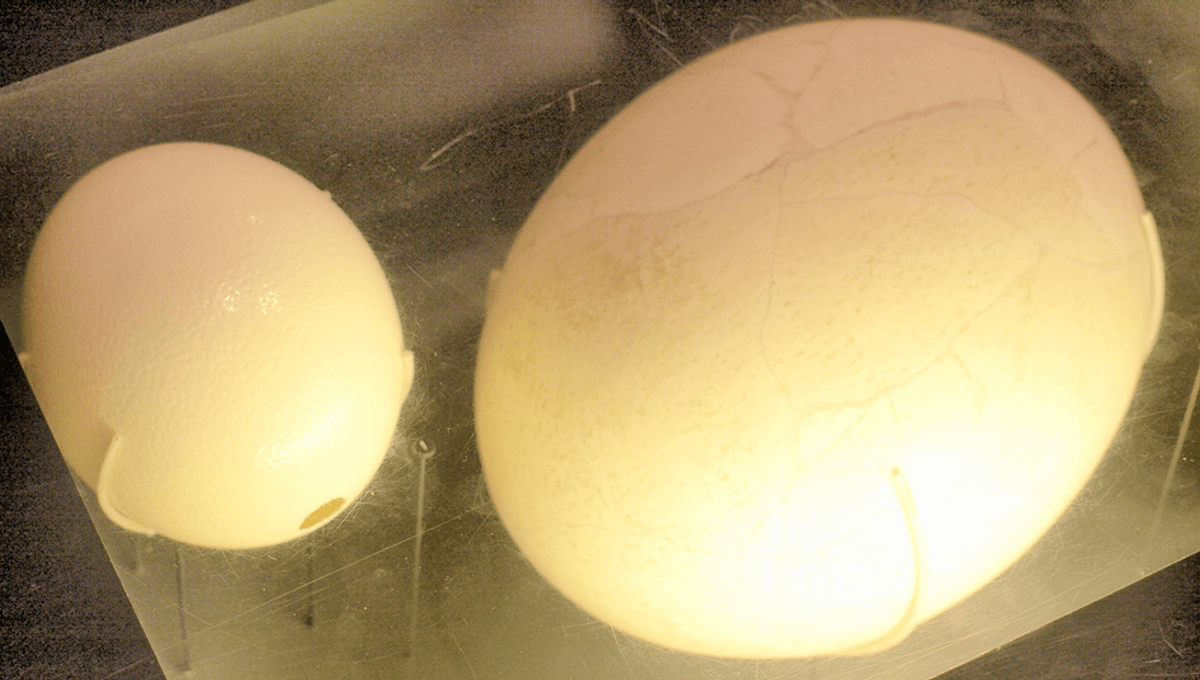
Eggs can come in a variety of sizes and flavors, just ask anybody who has tasted a penguin egg (once they get the horrendous taste out of their mouth, of course).
The largest eggs still being laid today come from ostriches. The biggest of those eggs on record weighed in at an impressive 2.589 kilograms (5.7 pounds), or about the weight of a small house cat. While you might feel sorry for the ostrich, other birds have it worse.
“The average [ostrich] egg is around 6in (15cm) long and 5in (13cm) wide, with a weight of only 1.4 percent of that of the laying female,” the book Birds – Their Life, Their Ways, Their World explains. “This is an unusually low figure for such a large bird.”
A female kiwi bird, for comparison, lays eggs that weigh around 15 to 22 percent of their body weight.
But in terms of the largest eggs ever laid, that title goes to the elephant bird (Aepyornis maximus), which roamed the island of Madagascar until around 1,000 years ago. These birds laid eggs that measured up to 33 centimeters (13 inches) long, and were capable of holding around 8.5 liters (2.25 US gallons) of liquid, according to the Guinness Book of World Records.
Elephant birds weighed over 450 kilograms (992 pounds, or around three pandas), so it might not be surprising that their eggs were so hefty. But they still appear, even to the trained eye, to be large beyond belief. In 2018, the Buffalo Museum of Science discovered that they had a real 1.5-kilogram (3.3-pound) egg in their collection, which they had previously mistakenly labeled as a cast.
“Lost, hidden or misidentified artifacts and specimens are not uncommon in museums that have been collecting for centuries, and we are thrilled to rediscover this rare egg in our collection,” Director of Collections, Kathryn Leacock, said in a statement at the time. “The Buffalo Society of Natural Sciences has been collecting since 1861, and as we continue to care for the collection, there is always more to learn and discover.”
While impressive, the sheer volume of egg – about the equivalent of 150-180 chicken eggs – may have played a part in the species’ eventual extinction. They were just too appealing to humans, with evidence of egg shells found amongst ancient human campsites suggesting that we stole them and cooked them for food. Combined with habitat change and hunting, the bird went extinct around 1,000 years ago, leaving the ostrich to inherit the title of the world’s biggest eggs.
Source Link: Big Egg Is So Big The Museum That Housed It Assumed It Was A Fake